By Dr. Sarah Bennett, NMD / September 7, 2020

How often do you find yourself thinking or saying..
“I’m just so tired today.”
For the majority of people this is not just an occasional experience. Consistent low energy is one of the most common concerns of all my patients.
And unfortunately, having a healthy energy level is essential for a good quality of life.
Although low energy levels are often chalked up to “getting old”, you are not doomed to a life of progressively worsening fatigue. Routine medical check ups and simple lifestyle changes can significantly improve energy.
What is energy and where does energy come from?
Energy is more than just an expression or measure of how we feel day to day. It is critical for every function of our body and ultimately our survival. Energy is produced from the food or beverages ingested daily.
In our bodies, we use adenosine triphosphate or ATP as our cell’s energy currency. It works as an energy-carrying molecule. Like a shuttle, it delivers energy to different locations of the body to power all cellular functions.
ATP is made through a process called cellular respiration in the mitochondria, the power plants of the human body.
Sugar and oxygen are utilized to create ATP and fuel our bodies, leaving behind carbon dioxide and water as byproducts of this process.
This can all be very technical but our body does all these processes every second without us realizing and it is amazing!
Many things can and will ultimately interfere with ATP production as we age, such as hormonal dysfunction, inactivity, high toxic load and other imbalances that will be covered in this article.
In addition to energy production dropping as a result of these hormones and bodily processes getting bogged down and becoming dysfunctional, other symptoms begin to present simultaneously.
Some of the most common include weight gain, anxiety, brain fog, depression, low libido, and other more serious conditions.
Before You Get Started Create Your Account!
This article will discuss the best natural ways for supporting a healthy daily energy level. Throughout, physician grade supplements will be recommended and linked.
To make it especially easy for you, the link to purchase them directly from the Natural Med Doc store will be provided. To order supplements from my store, you simply have to create a patient login and click through the site! Plus, once you have created a patient login, you won’t miss out on Natural Med Doc supplement discounts and promotions!
To do this, you will need to follow the ‘Welcome Link’ I’ve supplied below. Current patients already have an account and will not need to go through this process, so you only need to set everything up once and you’re set!
Welcome Link: https://us.fullscript.com/welcome/sbennett1527799795

Get up and move!
Physical inactivity has long been associated with an increased risk of developing illnesses and even mortality.
Increased levels of consistent moderate to vigorous physical activity have been known to reduce the risk of death by 20-35% in both males and females. (1) To be more specific, 150-minute of moderate to vigorous physical activity per week could reduce your risk of mortality by 33%.
In addition, exercise is strongly associated with a positive influence on mood and cognition. Studies show that 30% of adults report decreased levels of stress and 53% report a “good mood” after an exercise. (2) Additionally, this improvement in mood and stress is reported to support higher daily energy levels.
A good example of this effect is the “runner’s high”, a post exercise feeling of euphoria, relaxation, and decreased pain. As a result of vigorous cardiovascular activity, such as running, endorphins are released in the brain stimulating positive emotions, and decreased perception of pain.
Aside from endorphins, other neurotransmitters such as norepinephrine, dopamine, and serotonin are also released in response to exercise. Higher levels of these neurotransmitters are associated with better mood, alertness, motivation, and energy. (3)
In addition to improved neurotransmitter balance, research shows that exercise helps to reverse age related mitochondrial decline and dysfunction.
So yes, decreased energy does relate to aging..
Mitochondrial abundance per cell, volume, and overall functionality has been shown to decline as we age.
But, don’t worry! Exercise can help to reverse and prevent this.
Both resistance and aerobic exercise has been shown to rejuvenate mitochondria number and volume, and even restore functioning. Research suggests that routine moderate exercise may provide even greater mitochondrial enhancements in older individuals. One study showed that 12 weeks of routine progressive moderate intensity exercise can improve mitochondrial functioning more than 50%. (4)
To top it off, exercise further enhances the functioning of the cardiovascular and pulmonary system resulting in more efficient blood flow and oxygen usage in the production of ATP.
Shockingly, despite this evidence, only 17% of adults are said to be routinely exercising.(2)
So get moving!
It’s not too late to develop a daily workout routine! Regardless of which type of exercise you prefer, jogging, swimming, hiking, weight training, yoga, circuit training, HIIT, etc. it has been shown to improve daily energy levels.
Currently, the Centers for Disease Control and Prevention (CDC) recommends a minimum of 150 minutes per week of moderate intensity physical activity, of 75 minutes per week of vigorous intensity physical activity.(5)

Sleep is one of the most basic human needs for survival. Well actually, sleep is a fundamental need of all living organisms for survival.
Without sleep a person will ultimately die, so it’s not surprising that chronic sleep insufficiency can cause low energy levels.
For an adult human over the age of 18, 7 to 8 hours of sleep per night is considered healthy. (6) Unfortunately, a study done by the CDC reports that 1 in 3 American adults are consistently not getting enough sleep. (7)
As a result of taxing work schedules, and other lifestyle factors, the number of people reporting chronic sleep deprivation has dramatically increased since 1985. (7,8)
Chronic sleep deprivation has become so prevalent and results in an increasing amount of adverse health and economical effects that it has been deemed a ‘public health epidemic’. (8)
Sleep deprivation severely impacts daily energy levels, and as a result is now one of the leading causes of motor vehicle accidents. Over 56 million Americans report that they struggle to stay awake while driving, and 1 in 25 adults even admit to falling asleep while driving. (9, 10)
Sleep deprivation not only negatively affects energy but also cognition, emotional stability, honesty, cardiovascular and neurological health. (9)
More specifically, sleep deprivation and nocturnal light exposure is linked to mitochondrial dysfunction and increased oxidative stress. (11)
Proper sleep hygiene is often enough to correct sleep dysfunction and sleep deprivation. It is important to address sooner rather than later since research shows that sleep debts are not repayable.
Sleep hygiene refers to healthy sleep habits which can be optimized through basic lifestyle changes. (12)
To achieve good sleep hygiene, here are the things we need to remember:

Healthy food intake is the most important energy-boosting activity that we do.
Afterall, the food we eat is directly used as fuel for our body.
By avoiding sweets, sugar-filled beverages, and processed food, we decrease the risk of developing lifestyle diseases such as diabetes that highly impact daily energy levels.
Consuming high amounts of sugar, leading to elevated blood glucose levels has been shown to cause swelling and damage to mitochondria, ultimately resulting in suppressed functionality and lower ATP production. Over time a high sugar diet will significantly decrease daily energy. (13)
Food such as vegetables, nuts, seeds, fish, and other whole foods are not only encouraged but should make up the majority of what is ingested daily. I frequently recommend my whole foods diet plan, to provide a sustainable nutrient rich diet to support and improve energy.
Research has shown that maintaining a consistent nutrient rich diet can help protect and improve mitochondrial function.
More specifically, omega 3 fatty acids, vitamin C, vitamin E, and zinc have been shown to decrease oxidative damage to the mitochondria, allowing for better function and energy production. (14) Eating foods high in these nutrients can not only improve your daily energy but also protect against future decline.
B vitamins such as B12 and Folate are essential for the proper functioning of the methylation pathway which regulates DNA, detoxification, energy production, and functionality of cells. In cases of insufficient or deficient B12 and Folate the amino acid homocysteine begins to rise in the bloodstream.
Elevated homocysteine is toxic to the cardiovascular system and causes damage to the mitochondria, which has been shown to result in lower energy and even depression. (14) B vitamins are easily obtained through dietary and supplemental sources.
Unfortunately, the standard american diet is notorious for having a low nutrient status and even promoting deficiencies. In addition, chronic stress is shown to further deplete these nutrients leading to lower energy and many other symptoms resulting from nutrient deficiencies. (14)
This is why it is important to understand where and how you are getting these nutrients in your diet.
These nutrients are easily found in dietary sources such as those listed below:
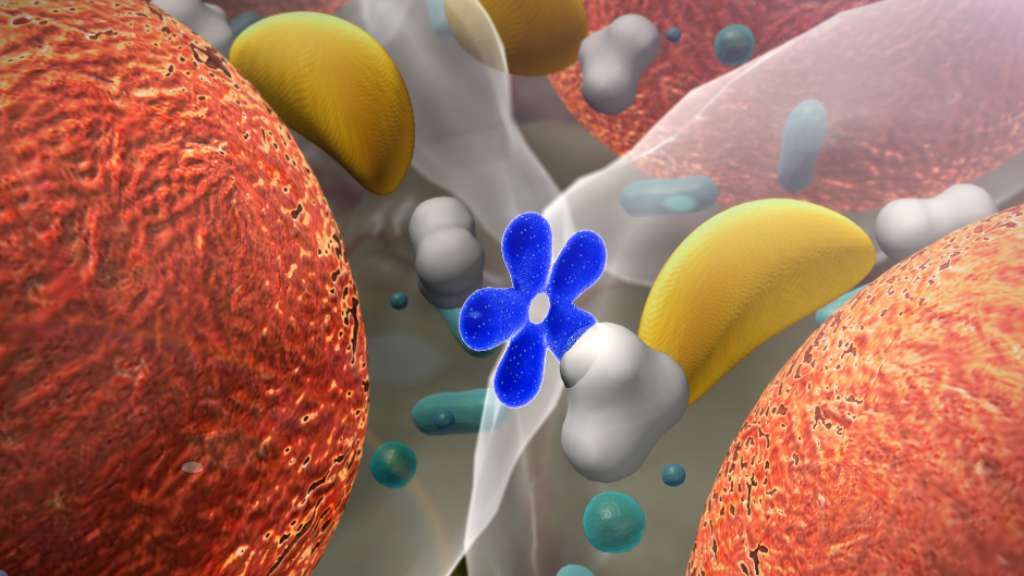
Hormones are one of the key players in maintaining vitality and a healthy energy level.
Progesterone, estrogen, and testosterone are the body’s primary sex hormones which must be in balance for optimal health.
Estrogen is the primary female sex hormone which is known for stimulating the development of secondary sexual charateristics, and influencing the menstrual cycle, but it actually does quite a bit more.
Some of estrogens additional benefits include supporting neurological health, cardiovascular health, bone health, and energy metabolism.
Estrogen, specifically estradiol to have many protective effects on the functioning of mitochondria, inhibiting apoptosis (cellular destruction), protecting against oxidative damage, and increasing the cellular number and mass of mitochondria. (22)
Overall, estrogen has a strong protective effect on the body’s energy production which is actually attributed for why women tend to have longer life spans than their male counterparts. (22)
Progesterone is another female sex hormone involved not only in pregnancy, but also in the proper regulation of the menstrual cycle.
Although many practitioners disregard progesterone outside of pregnancy, proper levels are essential to maintain healthy sleep, mood, stress management, and energy levels.
Similar to estrogen, progesterone has a multifaceted role in supporting healthy energy levels.
First, progesterone has been shown to support thyroid function by increasing the concentration of free thyroxine (T4). This means that more T4 is bioavailable for the body to convert to the active hormone triiodothyronine (T3), which regulates the body’s metabolism and directly impacts daily energy levels. (23)
Second, progesterone is a precursor for cortisol, the primary stress hormone of the body, that stimulates energy and alertness when produced. In times of stress the body will produce greater amounts of progesterone and cortisol. Progesterone will further support cortisol levels through conversion, which in turn supports energy levels.
Although, it may seem like progesterone would therefore increase stress levels that is not the case. Progesterone acts on the HPA axis negative feed back loop to help reduce feelings of anxiety. (24)
Food that could stimulate the production of progesterone includes beans, cream, milk, broccoli, cauliflower, and whole grains. These food products naturally stimulate our body to produce progesterone.(24)
Third, and finally, progesterone enhances mitochondrial activity directly increasing ATP production. (25)
Testosterone is the primary male sex hormone commonly known for ability to stimulate muscle growth and influence on sex drive.
Despite being labeled as a male hormone it is essential for optimal health in women as well.
In addition to stimulating sex drive, and muscle growth testosterone decreases pain, improves mood, cognitive function, motivation, insulin sensitivity, and energy.
By improving insulin sensitivity testosterone increases cellular glucose uptake which supports ATP production. (26)
Additionally, testosterone protects mitochondrial function through reducing oxidative damage, and increasing intracellular mitochondrial mass. (27)
These hormones naturally begin to decline around the age of 30. This progressively put us into a state of hibernation, or more specifically one of low energy and low metabolism.
This is why many people think “I’m just getting old” when they feel tired.
Although this is in part true, it is not untreatable.
Bioidentical hormone replacement is a wonderful and natural way to improve hormone levels and your overall energy.
Ask your local naturopathic physician to check your hormone levels to optimize you energy.
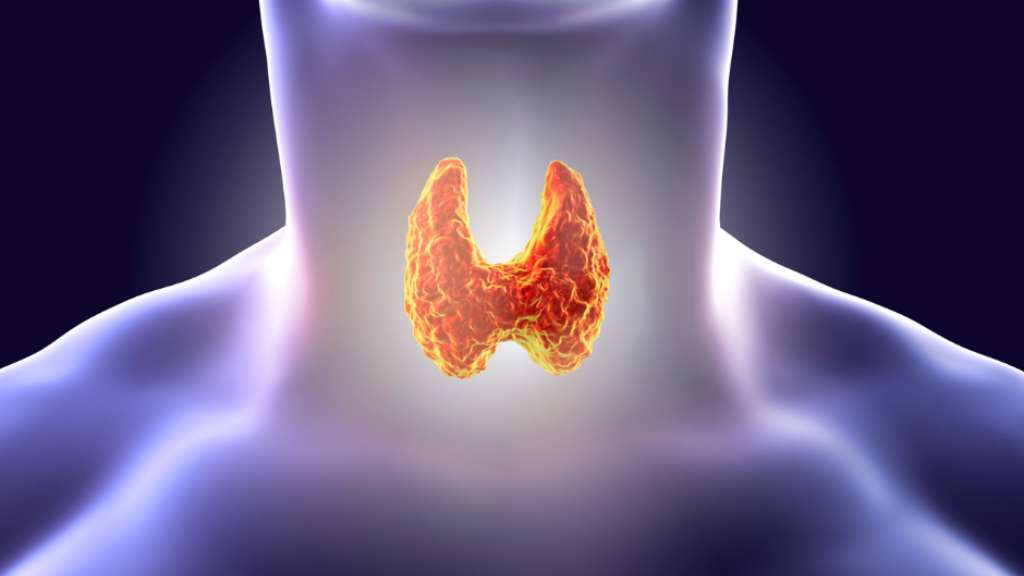
Thyroid dysfunction is one of the most common conditions treated at Natural Med Doc.
The thyroid is a butterfly shaped gland at the base of the neck that regulates the body’s metabolism, directly influencing energy, weight, mood, anxiety and more.
There are two primary categories of thyroid dysfunction, hypothyroidism, and under producing thyroid, and hyperthyroidism, an over producing thyroid. Each of which resulting in a unique symptom picture.
Hyperthyroidism is most commonly caused by Grave’s disease, an autoimmune condition. Although it is the less common form of thyroid dysfunction, it generally causes significant symptoms of anxiety, heart palpitations, irritability, nervousness, and insomnia. This can lead to a wired but tired feeling.
Conventionally, hyperthyroidism is treated using medication to block thyroid hormone production, and thyroid ablative surgeries and procedures.
Some of my favorite natural alternatives to conventional treatment consist of a combination of diet and lifestyle reform, and herbal supplementation.
Lycopus virginicus (Bugleweed), Melissa officinalis (Lemon Balm), and Lithospermum ruderale (Stoneseed) have all been shown to inhibit thyroid function.
Hypothyroidism is the most common form of thyroid dysfunction, which is not only notorious for causing fatigue, but also weight gain, brain fog, depression, constipation, etc. These symptoms may be caused in cases that hormones do not come back overtly low on laboratory results, a condition called subclinical hypothyroidism.
This is why it is important to see a provider who is well educated on the topic and understands how to not only correct hypothyroidism, but optimize its function.
Thyroid-stimulating hormone (TSH) is the signal from the brain to the thyroid gland, stimulating the production of thyroid hormones. TSH is also the most commonly tested thyroid marker as a measure of proper functioning, and unfortunately is often the only marker run. TSH is suboptimal at best, for managing thyroid function.
As a response to TSH, the thyroid produces two primary hormones triiodothyronine (T3) and thyroxine (T4), which are essential to optimize to achieve ideal energy levels. These hormone levels are very easily measured using serum free T3 (FT3) and free T4 (FT4) laboratory tests.
But, what you should be aware of is that even if your TSH, FT3, and FT4 levels are perfect your thyroid function may still not be optimal.
Reverse T3, is an inactive thyroid hormone that is produced when the body is under stress. Even a mild elevation in this hormone can result in blocking the body from utilizing the active T3, causing symptoms of hypothyroidism.
Lastly, thyroid antibodies such as thyroid peroxidase and thyroglobulin antibodies may permanently damage the thyroid gland over time resulting in suboptimal hormone levels.
As you can see, there are quite a few lab values to balance and that is why I do not recommend taking on optimizing your thyroid alone. This being said there are many natural therapies that have been shown to improve thyroid function.
Selenium, and Iodine are two of the primary nutrients needed for proper thyroid function, and can be easily obtained through dietary sources, such as brazil nuts, and seaweed respectively.
Herbal supplements are another wonderful natural way to boost thyroid function. Gum guggul, and Coleus Forskohlii have been shown by research to increase production of T3 and T4 and help to balance their ratio.

Cortisol is the body’s primary stress hormone secreted through the adrenal glands in a natural fluctuating pattern throughout the day as well as in a pulsatile fashion in times of stress.
When secreted cortisol helps to improve energy, alertness, and cognitive clarity, while inhibiting functions like digestion which are not essential for survival.
Naturally, Cortisol is secreted at a higher rate in the morning helping you to rise with energy and alertness to tackle the day, then gradually fall hour by hour until bed time, to promote drowsiness and sleep.
This gradual fluctuation is what would be seen in a perfect world.
Unfortunately, it’s not a perfect world.
Each and every one of us encounter minor to major stressors on a daily basis. These stimulate an enhanced pulsatile production of cortisol. Over time chronic daily stress stimulates cortisol to be produced at a consistently higher rate.
When Cortisol is produced at a higher rate you may experience fatigue, anxiety, irritability, insomnia, acne, poor concentration, and more.
Over time, the brain develops a new higher set point for cortisol production, that is ultimately unsustainable.
Although the brain continues to ask for a high level of cortisol, the adrenal glands can not continue to produce at that rate. Morning cortisol levels consequently begin to decrease leading to adrenal insufficiency.
The decline in cortisol production will ultimately lead to significant fatigue.
In addition, people often experience depression, dizziness, low libido, weight management issues, insomnia, and more.
In addition to chronic stress negatively affecting cortisol productions, there are a few more rare but serious conditions that alter cortisol levels. Cushing’s disease and Addison’s disease are two autoimmune conditions that significantly raise and lower cortisol levels respectively, leading to similar but more severe symptom pictures.
The good news is that there are some very simple natural therapies that help support a healthy stress response and proper cortisol levels.
The most natural way to decrease anxiety and improve cortisol production is to implement a consistent meditation practice to your daily routine.
Vitamin B6 or pyridoxine helps to regulate the cells response to steroid hormones such as cortisol. Research has found that chronic stress may deplete and even cause deficiencies in Vitamin B6, which ironically causes an aggravated response to cortisol production. Ultimately, this enhances the stress felt on the body.
Vitamin B6 in the form of Pyridoxal 5′-Phosphate or P5P can improve cellular hormone response and therapeutically improve chronic stress. (28,29)
In adrenal insufficiency, to regain energy and cognitive clarity it is also important to improve cortisol production. Vitamin B5 or pantothenic acid has been shown to increase adrenal responsiveness to Adrenocorticotropic hormone (ACTH) the signal from the brain stimulating the secretion of cortisol. (30,31)
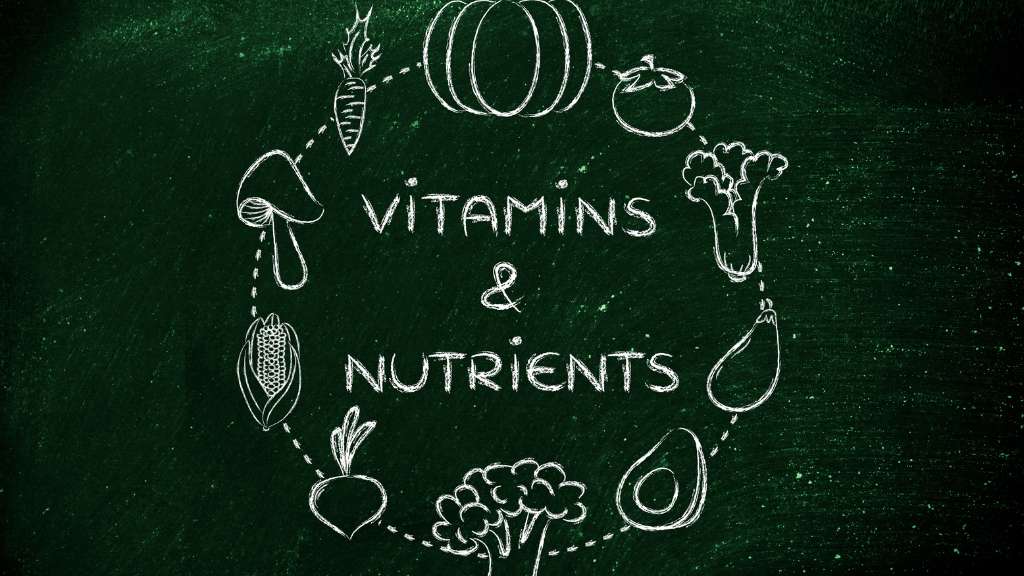
Unfortunately, nutrient deficiencies are exceedingly common, not only in America but world wide. Approximately, 2 billion people worldwide are affected by one or multiple nutrient deficiencies. (32)
Although, each nutrient deficiency results in its own set of unwanted symptoms they all share one common symptom, Fatigue.
This is due to the fact without the proper essential nutrient and vitamin status your body struggles to produce ATP.
Some of the most common deficiencies leading to fatigue include iron, vitamin D, magnesium, glutathione, zinc, iodine, vitamin B12, and folate.
Iron is an essential component of red blood cells, to allow delivery of oxygen to cells across the body. Disruption in this process quickly leads to fatigue, lightheadedness, heart palpitations, hair loss, brittle nail, headaches, and more.
In 2016, 2.8 million people worldwide were diagnosed with iron deficiency or microcytic anemia. (33)
Not all Iron deficiency cases are the result of poor dietary iron intake. Many develop iron deficiency due to heavy menstrual cycles, bleeding conditions, and side effects due to bariatric surgery. Regardless of cause it is essential to replenish these iron levels in the body, and the first step is to ensure adequate dietary intake.
The primary dietary sources of iron are lean red meat, seafood, oysters, beef liver, white beans, spinach.(34) Animal proteins contain the highest concentrations of dietary iron, which is why vegans and vegetarians often develop iron deficiency anemia. Although concentrations are less, there are plant based sources. Due to this I recommend that vegans and vegetarians are mindful of how they obtain iron in their diet, and have routine laboratory evaluations to ensure levels are optimal.
Vitamin B12 is an essential nutrient to support neurological and blood cell health, DNA production, and is a key cofactor in hundreds of biochemical processes in the body.
Although the exact prevalence of Vitamin B12 deficiency or Macrocytic anemia is unknown, it is not rare, being estimated to affect 1.5% to 15% of the population. (35) B12 deficiency can be caused by multiple factors such as poor nutritional intake, autoimmunity, and malabsorption due to bariatric surgery.
In addition to significant fatigue, symptoms often include weakness, loss of appetite, numbness and tingling in the hands and feet, constipation, poor memory and concentration, and depression.
Similar to iron, dietary sources of vitamin B12 are primarily animal proteins, making B12 deficiency very common vegans and vegetarians. Although many processed foods are now fortified with B12, quantities vary and often include high amounts of sugars, grains, and preservatives. I always recommend that vegans and vegetarians are aware of this risk, and have routine blood work completed to assess B12 levels.
The primary dietary sources of vitamin B12 are fish (trout, salmon, tuna), red meat, poultry, eggs, and nutritional yeast. (36)
Folate or vitamin B9 is essential for DNA production, and proper cell growth, division, and function. Folate deficiency not only causes significant fatigue, but also weakness, irritability, brain fog, depression, increased levels or inflammation, and muscle pain.
Folate deficiency, like B12 deficiency also causes macrocytic anemia, often leading to improper treatment.
Folate deficiency affects more than 20% of the population in low-income countries while less than 5% of those in high-income countries like the United States. (37)
Folate deficiency causes slowing of the methylation pathway, causing dysfunctional cell growth and function. In addition, as mentioned above, due to the slowing of the methylation pathway homocysteine begins to rise and become toxic to mitochondrial function. The combination of these negative effects on cellular and mitochondrial function lead to extreme fatigue.
High folate concentrations can be found in a wide variety of foods including but not limited to; beef liver, dark leafy greens ( spinach, lettuce, mustard greens), beans, peas, seafood, eggs, meat, poultry, brussel sprouts. (38)
Vitamin D is primarily responsible for balancing serum calcium, phosphorus, and magnesium, yet impacts many other aspects of health, such as regulating bone mineralization, immune function, neuromuscular function, cell cycles, and more.
Unfortunately, vitamin D deficiency is becoming increasingly more common due to environmental pollution, sunscreen, food and body product additives, and the fact the majority of people work and live in doors. It is estimated that 1 billion people are now affected by vitamin D deficiency or insufficiency worldwide. (39)
Vitamin D deficiency causes extreme fatigue, weakness, depression, muscle aches, poor immune function, and weak bones.
More research is needed to determine the mechanism by which vitamin D deficiency causes fatigue, but it is thought to cellular deplete vitamin D receptors resulting in mitochondrial damage and cell death. (40)
The primary source of vitamin D is through the conversion of sunlight (UVB rays) in the skin. Unfortunately, high concentrations of vitamin D are not found in nutritional sources and often must be supplemented. (41)
This being said smaller concentrations may be found in skin of fatty fish, many UV-exposed mushrooms, beef liver, egg yolks, and Vitamin D fortified foods. (42)
Glutathione is the body’s main antioxidant, crucial for reducing oxidative stress, detoxification, decreasing inflammation, and proper function of the immune system. (43)
It is a tripeptide created inside the body from combining the following three amino acids: cysteine, glutamate, and glycine, all of which are easily obtained through the diet.
Although, specific laboratory reference ranges for optimal serum glutathione levels are lacking, it has been shown that chronic stress will deplete the body’s levels. (43)
Insufficient glutathione levels have been shown to increase oxidative stress on mitochondria and decrease functioning, leading to decreased ATP production and lower daily energy levels. (43)
Food sources such as asparagus, avocado, cabbage, spinach, broccoli, tomatoes, cucumber, almonds, and walnuts may be used to help optimize glutathione status and support detoxification pathways. (44)
Magnesium is a mineral essential for over 300 biochemical processes in the body, and is responsible for energy production, blood glucose control, muscle health, neurological functioning, blood pressure regulation, and more.
Magnesium deficiency is becoming increasingly more common due to the depletion of nutrients and minerals in the soil used for farming, and increase in use of distilled, purified, and reverse osmosis for drinking water. Affecting an estimated 30% of the population. (45)
Deficiency will commonly cause fatigue, weakness, brain fog, numbness and tingling, cramping, difficulty sleeping, mood changes, and muscle twitching.
The good news is that dietary magnesium sources are found in a diverse range of foods, including but not limited to: green leafy vegetables, legumes, peanuts ,almonds, cashews, seeds, dairy, avocado, soy milk, edemame, and salmon. (46)
Coenzyme Q10 (CoQ10) is a potent antioxidant and important cofactor for mitochondrial ATP production.
Although primary deficiency is rare, common drugs such as statins directly block the body’s ability to produce CoQ10. In addition, research has found that increased stress on the body produces more free radicals which leads to the depletion of CoQ10, resulting in poor mitochondrial functioning and ATP production. (47)
CoQ10 deficiency will not only cause significant fatigue, but also muscle pain and cramping, stiffness, cognitive dysfunction, involuntary eye movements, and even vision loss. (48)
CoQ10 is easily obtainable through dietary sources such as fatty fish (salmon, tuna), beef liver, and whole grains. (47)
Most people obtain sufficient amounts of CoQ10 from dietary sources, but research is finding that supplementation of higher doses may be beneficial in treating a wide array of conditions.(47)
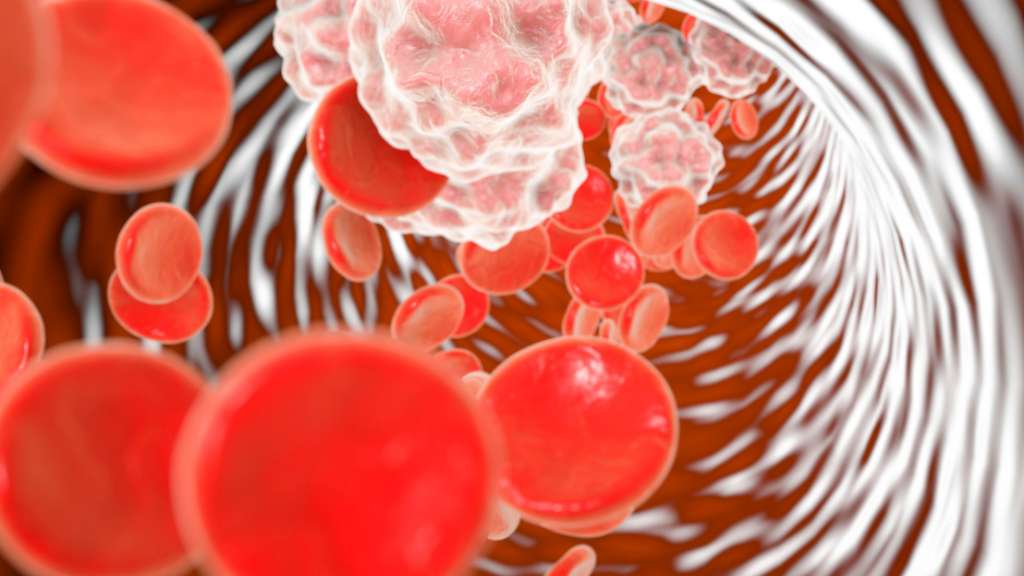
Inflammation is the body’s natural reaction to infection or injury, producing high amounts of white blood cells, cytokines, interleukins, and other inflammatory markers to help heal the body.
Once healed the production of these markers should stop, yet in many disease processes this is not the case, resulting in chronic low grade inflammation.
Chronic low grade inflammation often comes hand in hand with significant fatigue. Although the exact mechanism is unknown, it is known that chronic inflammation will cause a shift in metabolism, decreasing insulin sensitivity, and glucose uptake into the cells, while increasing oxidative stress. Ultimately, damaging mitochondria and decreasing efficiency in ATP production, which over time lowers daily energy. (49)
Chronic low grade inflammation triggers the immune system leading to a consistently elevated production of white blood cells. These immune cells are highly affected by the developing insulin resistance, resulting in less glucose uptake and lower cellular ATP production.
In response, to ensure proper immune system function the body will divert glucose away from other systems of the body to increase supply to the white blood cells. This process leaves less glucose to create energy for the other functions of the body, deemed less important during this time. Over time this will dramatically decrease energy levels. (49)
Inflammation has become one of the newest medical buzzwords, because it contributes to the development and presentation of a diverse set of conditions and diseases. Fatigue, pain, diabetes, lupus, weight gain, IBS, acne, are just the tip of the iceberg.
Despite the enormous presence of inflammation in many medical conditions there are many simple and effective natural therapies shown by research to decrease inflammatory levels.
Curcumin has become one of the most popular natural anti-inflammatory therapies due to its high efficacy rate and wide variety of additional benefits.
It has been shown to decrease inflammation with a similar efficacy to that of ibuprofen.(50) But that’s not all, in addition to holding anti-inflammatory properties, curcum has been shown to provide significant anti- oxidant, anti-microbial, anti-diabetic, anti-tumor, nephro-protective, cholesterol balancing, anti-hypertensive, and immunomodulatory effects. (51,52)
Curcumin is the primary anti-inflammatory constituent found in curcuma longa plants such as turmeric. Unfortunately, eating high quantities of turmeric or curcumin alone will not provide much benefit due to its poor bioavailability. Activating agents such as piprine, a constituent found in black pepper are essential to provide therapeutic effect, enhancing bioavailability by 2000% (53).
Although more research is needed to determine the exact mechanism of action by which curcum provides its medicinal benefits. It is known that some anti-inflammatory effects come from its ability to block COX-2 enzymes, and lower tumor necrosis factor- alpha (TNF-a) and Interleukin 6 (IL6) which are found elevated in inflammatory conditions. (54)
Curcumin Extract by Vital Nutrients is one of my favorite curcumin supplements, providing 1000mg in just 2 capsules and include the activating agent piperine.
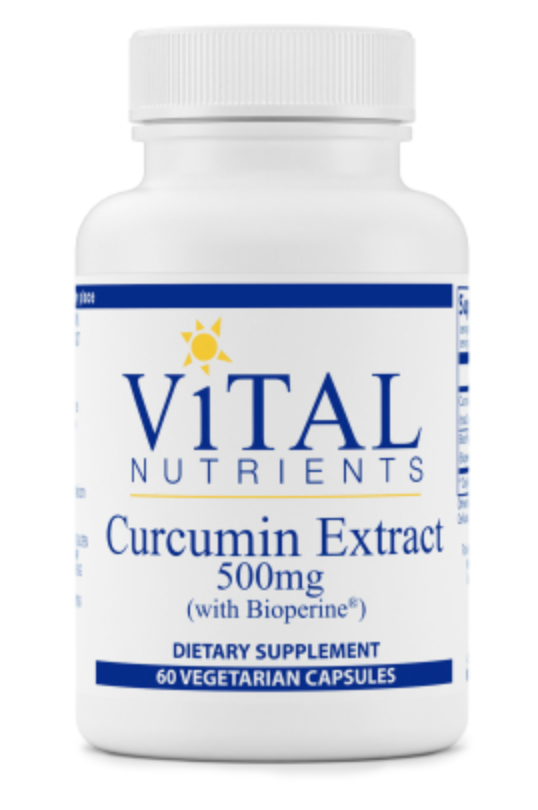
Supplement Link: https://us.fullscript.com/u/catalog/product/U3ByZWU6OlByb2R1Y3QtNjY3NTA=?q=Curcumin+extract&variant=U3ByZWU6OlZhcmlhbnQtNjY3NTA%3D
Dehydroepiandrosterone (DHEA) is an androgen produced from the adrenal glands that is not only frequently low in those diagnosed with inflammatory conditions, but has been shown to decrease chronic low grade inflammation when supplemented. (55,56)
Studies have shown that DHEA supplementation may even decrease the need for prednisone in inflammatory diseases such as lupus. (55)
I have linked one of my favorite DHEA supplements below. But, before you purchase be sure to discuss what dose is appropriate for you with your local naturopathic physician. DHEA is an androgen and should be prescribed in different doses for men versus women. Too high of a dose may cause acne, facial hair growth, and anxiety.
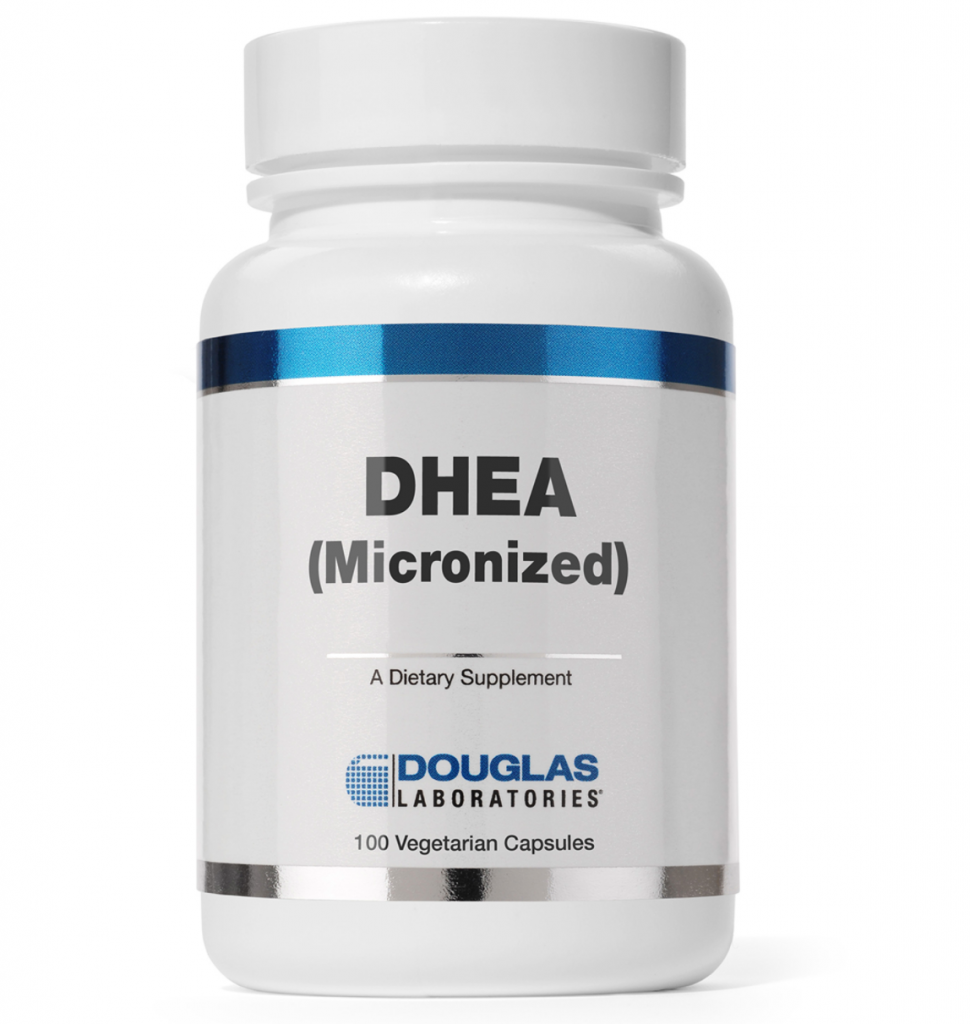
Supplement Link: https://www.naturalpartners.com/us/dhea-10mg-micronized-/AM0120PAR?x=
Elimination Diets:
Although not glamorous and often not easy, it is essential to eliminate inflammatory properties from the diet to gain optimal and sustainable anti-inflammatory results. Unfortunately, without reforming the diet results from supplementation alone will be minimal.
There is no magic pill when it comes to health.
I will frequently recommend elimination style diets to effectively remove all foods causing inflammatory reactions in the GI system.(57, 58) Eliminating the inflammatory components provides the opportunity to then go forward and heal the GI lining. After 3-6 weeks a slow guided reintroduction of food is recommended to determine which foods are causing the most reaction when ingested.
A food sensitivity panel may be run to further assess your specific needs prior to starting the elimination process. I will use these panels as tools to assess which foods are causing the highest amount of inflammation.
This process will ultimately help determine what is your individualized optimal diet.
Fasting provides GI rest, resulting in a quick and easy reduction in inflammation. I will frequently recommend different fasting protocols ranging from daily intermittent fasting, to 5 day water fasts as a solo dietary treatment or in conjunction with other nutritional programs to break inflammatory flares, and eliminate chronic low grade inflammation.
Although, certain conditions may call for longer fasting periods, even intermittent fasting has been shown to lower inflammatory markers such as TNF-a, IL-6, and blood glucose levels. (59,60)
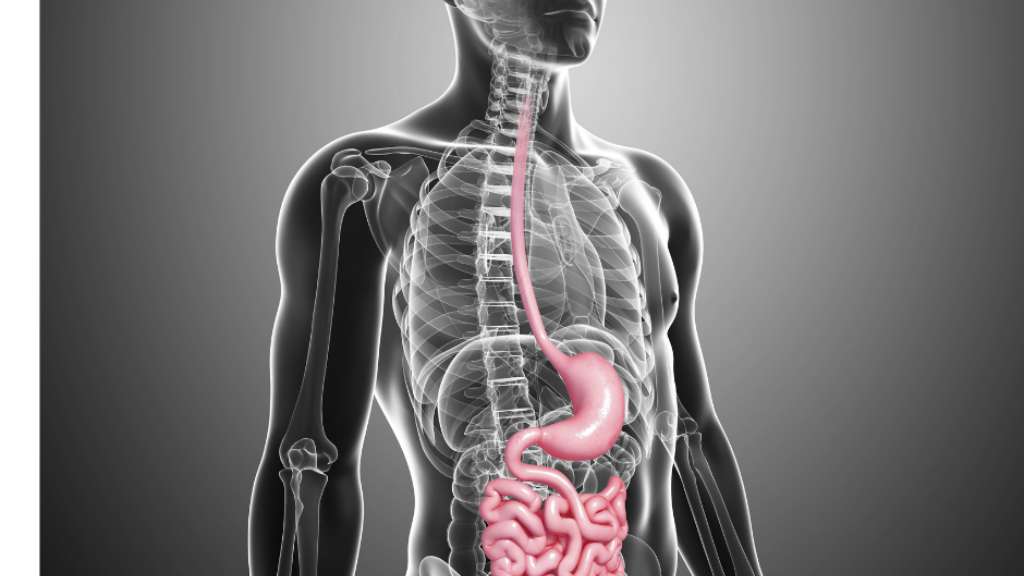
The food that we eat is directly converted into the fuel for our body so there is no surprise that digestive disorders can have a significant impact on our daily energy levels.
Digestive health is not only one of the top concerns seen at Natural Med Doc, it is often a primary contributor to low energy levels.
Commonly used medications and digestive conditions ranging from ulcerative colitis, to SIBO cause malabsorption, inflammation, and disruption of the healthy microbiome which all simultaneously cause lower energy production.
Malabsorption can be global or nutrient specific, but regardless will cause a combination of the following symptoms: (61)
Nutrients commonly effected by malabsorption include fatty acids,
Both micro and macro nutrients may be effected by malabsorption, ultimately leading to deficiencies resulting in decreased mitochondrial function and ATP production.
The microbiome of the digestive tract is made up of a diverse composition of beneficial bacteria.
A healthy microbiome is essential for a strong immune system, proper digestion, weight management, and energy balance. (62)
The body’s energy input output balance is easily thrown off when the microbiome is disrupted, often resulting in inflammation, weight gain, and has even been suggested to contribute to chronic fatigue syndrome. (62,63)
Recent research is quickly finding that the microbiome has a greater impact on the body than originally thought, making it all the more important to protect the health of our digestive system.
The standard american diet quickly disrupts the gut microbiome due to containing high concentrations of sugar, dairy, inflammatory fats, additives, and preservatives. In addition, commonly prescribed medications such as antibiotics, proton pump inhibitors, metformin, and laxatives further damage the gut flora.
Although, these are not the only factors that influence the health of the digestive system, diet and medications alone are enough to cause significant damage and unwanted symptoms.
Damage of the microbiome leads to an immune response causing inflammation. This inflammation may be overt, as seen in conditions such as crohn’s or ulcerative colitis, or chronic low grade inflammation, as seen in conditions such as Irritable bowel syndrome or SIBO. (64)
As mentioned above low grade inflammation is shown to inhibit mitochondrial function leading to a decreased production of ATP and over energy levels.
The beneficial bacteria in the microbiome have been shown to send signals to the mitochondria, regulating ATP production. Disruption to this bacteria can alter the signalling causing further mitochondrial dysfunction and lower energy production. (65)
The silver lining is that natural therapies are often the best way to heal many digestive disorders, and there is no shortage in treatment options.
Natural treatments will often combine a restrictive nutrition protocol with nutrient and herbal supplementation. The nutrition protocols recommended vary based on condition and severity. The basic whole foods diet, elimination diet, low lectin diet, Low FODMAP diet are just a few often prescribed at natural med doc.
These nutrition protocols are generally paired with an individualized gut healing protocol including a combination of supplements. Below,I have listed two of my favorite supplements that I frequently recommend for digestive health.
GI Revive is a soothing nutrient and herbal blend wonderful for healing the gut lining, and decreasing inflammation.
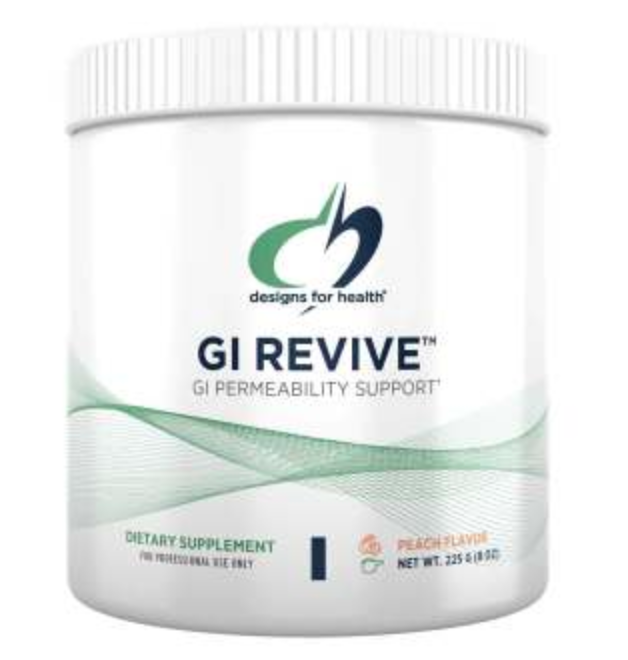
Supplement Link: https://us.fullscript.com/u/catalog/product/U3ByZWU6OlByb2R1Y3QtNzMxNTk=?q=gi+revive&variant=U3ByZWU6OlZhcmlhbnQtNzI0MTM%3D
Probiotics are a wonderful way to supplement live healthy beneficial bacteria to help seed and regrow a balanced microbiome. Be sure to keep the bottle in the refrigerator to ensure the bacteria are alive when ingested.
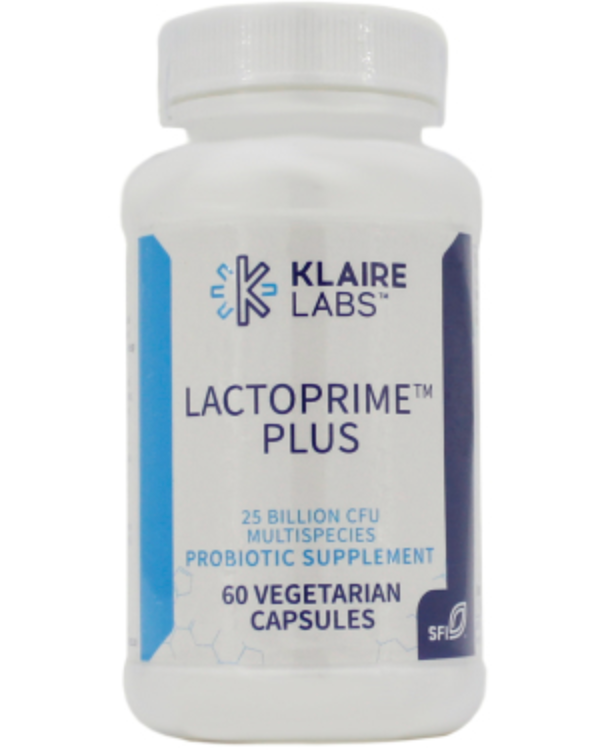
Supplement Link: https://us.fullscript.com/u/catalog/product/U3ByZWU6OlByb2R1Y3QtNzE1OTk=?q=Lactoprime&variant=U3ByZWU6OlZhcmlhbnQtNzE1OTk%3D

Different forms of detoxification have been used across cultures for thousands of years, and are still used in modern american medicine.
Conventional medicine commonly uses detox therapies to treat alcoholism, drug addiction, and toxic poisonings. Furthermore, these therapies are typically natural nutrients and vitamins that support the body’s detox pathways.
As you can see, cleansing the body is not a new trend of fad, but has been continually used throughout the years.
Each and everyone of us are exposed to toxins on a daily basis, from the food we eat, the lotions we use, the air we breath, the cleaning agents we use, and more. Exposure to environmental toxins has been shown to result in sustained mitochondrial dysfunction. Again, meaning lower ATP productions and therefore lower daily energy levels. (66)
Some of the toxins we are exposed to will be easily filtered out of the body through the liver and kidneys, but other end up finding homes in places such as our bones and fat cells. Often times this results in a gradual buildup in the body of toxic load.
This is why it is important to take the time to cleanse or detox the body.
Yes, sufficiently cleansing the body can significantly improve energy levels, but can also resolve many other health concerns, including but not limited to:
The first step is to avoid exposure to toxins when possible. One of the easiest places to begin is the kitchen. Buy organic, GMO-free, antibiotic free, grassfed, grass finished, pasture raised produce and meat.
If you are unable to afford all organic produce use the clean 15 and dirty dozen to make the most of your money. Using these guidelines will help you eliminate unnecessary toxins, such as pesticides from the diet.
The Dirty Dozen is a list of 12 fruits and vegetables that farmers use the highest amount of pesticide on, meaning these fruits and vegetables have high exposure to toxins.
The Clean 15 on the other hand includes the 15 fruits and vegetables that have the lowest yield of pesticides.
Don’t stop at the kitchen! Be sure to clean up your cleaning products, body products, and make up.
In addition to avoidance, I highly recommend completing a cleanse at least once a year. This will help to further eliminate the exposure to toxins while stimulating detox phase 1,2, and 3 to decrease the body’s toxic burden.
Detox programs come in different durations and intensities. Below I have listed one of my favorite detox programs that is appropriate for both beginner and experienced cleansers.
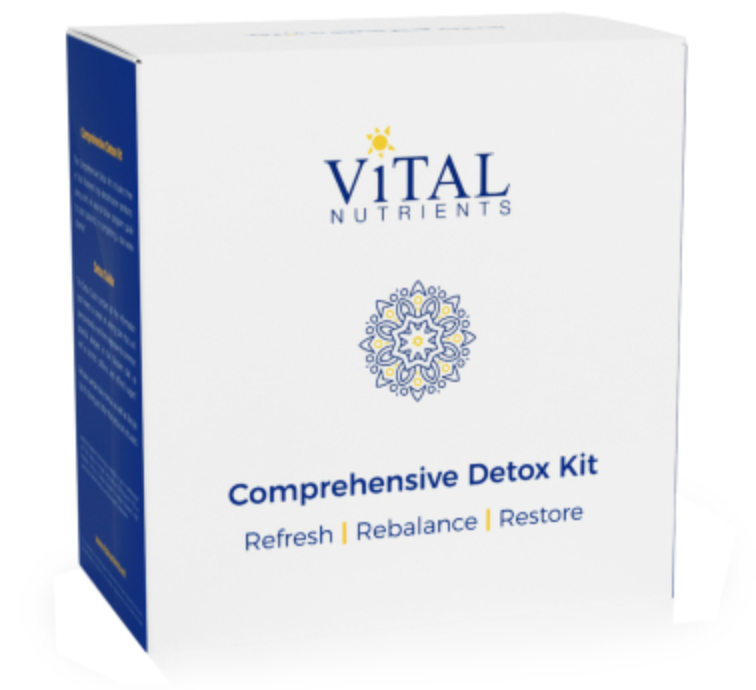
Cleanse Kit Link: https://us.fullscript.com/u/catalog/product/U3ByZWU6OlByb2R1Y3QtODM4NjU=?q=14+day&variant=U3ByZWU6OlZhcmlhbnQtMTAwNDQ5
Fiber supplementation has long been linked to cancer prevention. It bulks up the food being processed in our intestines and could also lower the sugar level in our bodies. Fiber increases the antioxidants in our body, hence aiding detoxification.
Milk thistle is commonly seen in Mediterranean countries. It is a flowering herb commonly used in the treatment of liver problems. Detox occurs in the liver and with supplementation of milk thistle, there is an activation of glutathione enhancing the detox process.
NAC or N-acetyl-l-cysteine is used as an antidote in certain toxicities but in a detox process, it has a main role in the production of glutathione. Production of glutathione greatly depends on the availability of N-acetyl-l-cysteine.
Mitochondria are the power houses of the body, producing cellular energy needed for all functions of the body. So there is no surprise that the fundamentals of supporting daily energy levels involves protecting and enhancing mitochondrial function.
Addressing all of the areas listed above will without a doubt improve mitochondrial function and daily energy, but lets take it one step further.
Many patients ask if they should be taking a multivitamin, and while these supplement can be beneficial for optimal nutrient status, energy, and overall health. It is important to make sure that your particular supplement is not only providing the right nutrients for optimizing energy, but that they are provided in a bioavailable form and therapeutic amount.
Therefore, when I do recommend a multivitamin, I typically will recommend a blend specifically designed for mitochondrial support.
I have listed my favorite mitochondrial support blend below.
MitoCORE is scientifically formulated, based on published research, to boost mitochondrial reserves and jump-start cellular energy production. MitoCORE includes the powerful antioxidant trio of alpha lipoic acid, N-acetyl cysteine and acetyl L-carnitine shown to increase energy production and at the same time, recharge the primary cellular antioxidant pools of vitamin E, C and glutathione. MitoCORE also includes key micronutrients and phytonutrients including green tea, broccoli seed extract and resveratrol to protect the mitochondria and continually renew the cycle of energy production.
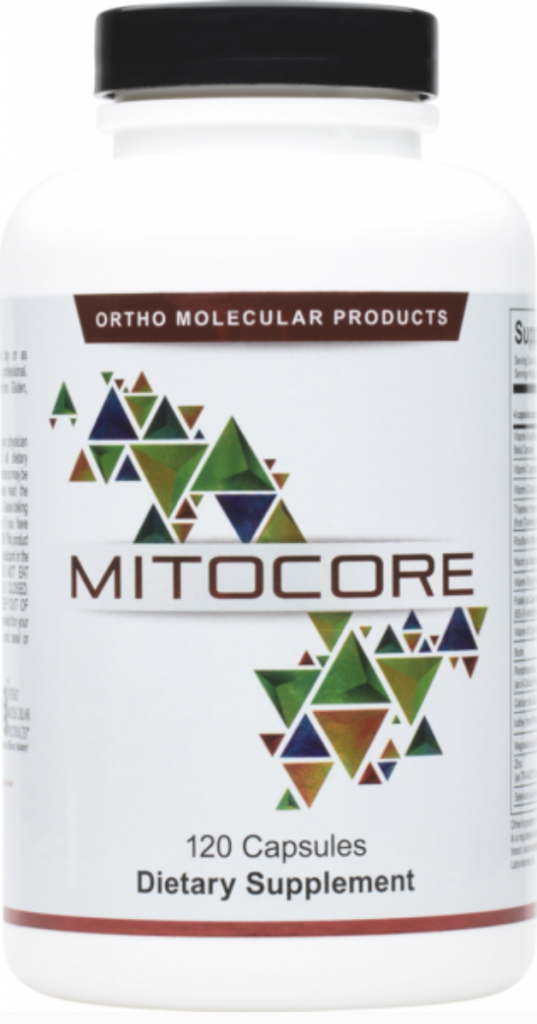
These are the eleven ways that could improve and boost our energy! Our lifestyle is the main contributor to stress. Continuously choosing the wrong diet, sleeping habits and lifestyle suck out our energy. Before you know it, you’ll get burned out. Start small, change your diet, and continuously choose to be healthy!
If you want to boost your energy, then today is the day to start!
To recap here are 11 ways that you could do to improve your energy:
What are you waiting for? The best time to improve your energy is now! With the list above, you can be on your way to a more energized you!
Ready to take your energy boosting to the next level? Click here to book a free consultation with a health advisor.
Hello, my name is Dr. Sarah Bennett, NMD!
I am a naturopathic physician licensed in the state of Arizona currently practicing at my office in Scottsdale, AZ. I received my degree from Southwest College of Naturopathic Medicine, did a year residency at Keystone Natural Family medicine, and received additional training for aesthetics & anti-aging at National Laser Institute.
My passion and fascination for natural medicine began during my undergraduate studies at Indiana University where I got a dual degree in neuroscience & psychology.
I saw how a preventative approach could help you live a long and youthful life. Since then I have dedicated my life to serving others to understand the latest medical trends.
I spend my spare time running, hiking, rock climbing, camping, testing out new diets, and reading books on latest medical trends / listening to podcasts to find the latest nuggets of knowledge to improve the quality of life for my patients. I look forward to serving you!